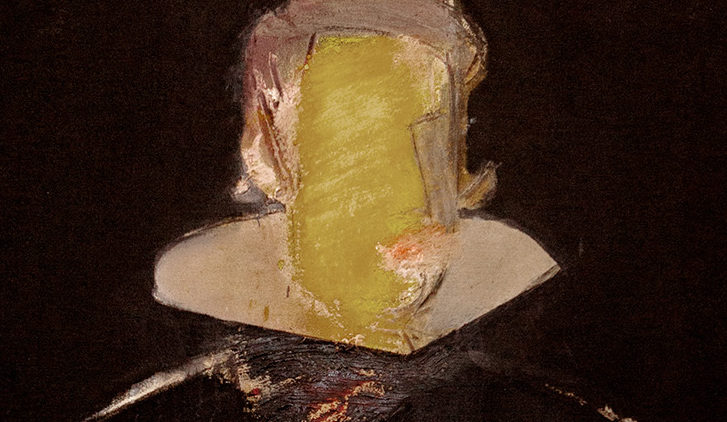Manolo Valdés: a dialogue between past and present
Manolo Valdés and Rafael Solbes revolutionized the Spanish art scene in the last years of the Franco’s regime. They founded Equipo Crónica, and they were leaders of a politicized and corrosive pop unprecedented in the country. In his works, mass culture and art history overlapped in ingenious palimpsests.
Solbes died in 1981, which meant for Manuel Valdés the start of alone career that, without abandoning the interest in dialoguing with the painting of the past, would be characterized by a greater reflective refinement to the detriment of the irreverent humor and self-confidence of his previous stage.
This portrait of Felipe IV, made a year after Equipo Crónica was dissolved, testifies to this process of plastic purification. Part of a Velazquez portrait in which the monarch was represented full-length. In Valdés’s homage, features disappear under synthetic brushstrokes that economize on forms. The ruff is reduced to geometric planes, the same as the court dress. Valdés will return to this portrait in later years, versioning it in a series of “Knights” holding a collage in their right hand, instead of the original letter that Velázquez painted. However, in this first version in oil, the king is represented in half body. The chromatic reduction to black, yellow and white endows the figure with spectral intensity, as an archetype with symbolism because it is the depository of a long history of representation of power.
The paintings and engravings of Manolo Valdés show a deep knowledge and a frank admiration for the great masters, from whom he freely took what he considered appropriate instead of contemplating them on their throne, as untouchables. Reinterpreting, versioning and recreating was his motto.

